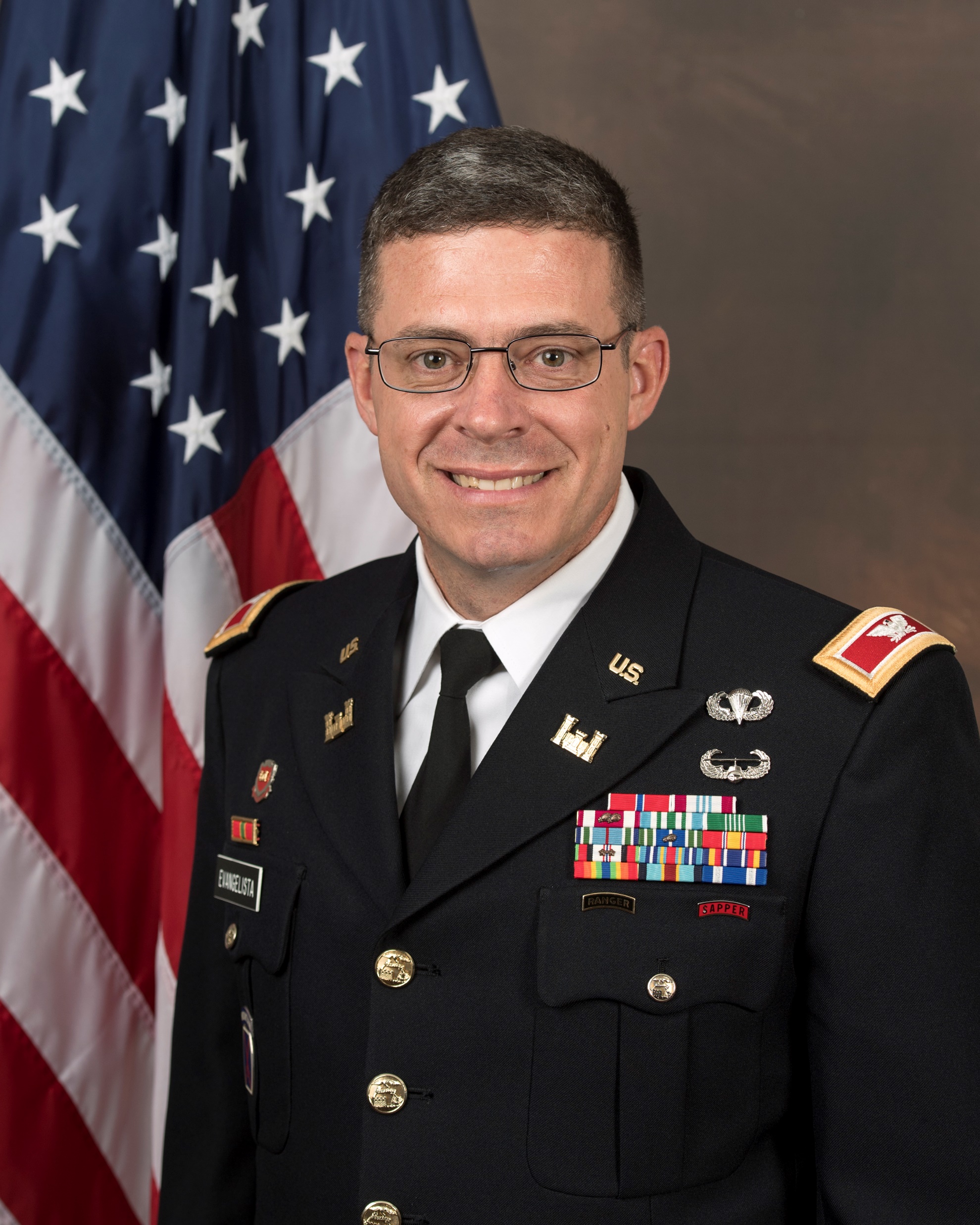KEYNOTE SPEECH:
|
|
KEYNOTE SPEAKER:
|
 |
|
COL Paul F. Evangelista was commissioned as an Engineer officer from the United States Military Academy in 1996. Upon completion of the Engineer Officer Basic Course, COL Evangelista served as a platoon leader, company executive officer, and battalion maintenance officer with the 65th Engineer Battalion, 25th Infantry Division (Light), Schofield Barracks, Hawaii. In 2000 COL Evangelista completed the Engineer Captains Career Course and was assigned as the S4 for the 41st Engineer Battalion, 10th Mountain Division (Light), Fort Drum, NY. While at Fort Drum, he assumed command of the 642nd Engineer Company (Combat Support Equipment) and deployed with the company to Iraq in 2003. Upon returning from Iraq, COL Evangelista started graduate school at Rensselaer Polytechnic Institute where he earned an M.S. in Operations Research and Statistics and a Ph.D. in Decision Sciences and Engineering Systems. From 2005 to 2008, COL Evangelista served as an Assistant Professor in the Department of Systems Engineering and career field designated as an operations research/systems analyst (ORSA). As an ORSA, COL Evangelista was assigned to the Training and Doctrine Command Analysis Center in Monterey (TRAC - Monterey), located at the Naval Postgraduate School, where he served from 2008-2012. From January 2011 – July 2011 COL Evangelista deployed as an analyst at ISAF headquarters, Kabul, Afghanistan. In June of 2012, COL Evangelista was assigned as an Academy Professor in the Department of Systems Engineering at USMA. From June of 2013 to December of 2013, COL Evangelista deployed to serve as the Chief ORSA for the theater counter-IED task force, Combined Joint Task Force Paladin, Bagram, Afghanistan. During his current assignment at USMA, COL Evangelista has served as an Academy Professor in the Department of Systems Engineering and currently serves as the USMA Chief Data Officer. COL Evangelista is a distinguished graduate of the US Army War College and a licensed professional engineer in the state of New York. LinkedIn Profile: https:/www.linkedin.com/in/paul-evangelista/ CV: http://paul-evangelista.com/documents/CV_Evangelista_current.pdf |
|
Copyright © 2022 - All Rights Reserved - http://wwww.ieworldconference.org
Template by OS Templates
